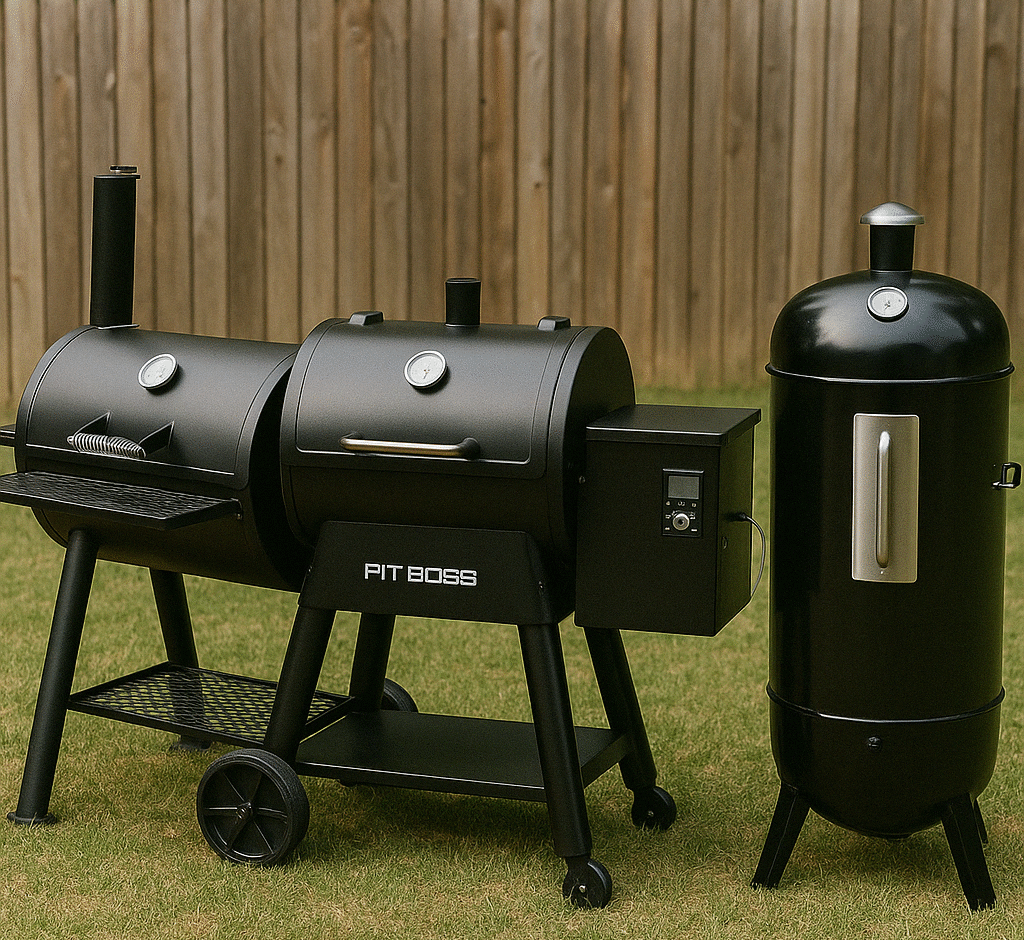
Curious about BBQ smoking but not sure where to start? Learn what smoking is, why it’s different from grilling, and how it can take your barbecue to the next level.
What Is Smoking?
Smoking is one of the oldest cooking methods known to man, dating back thousands of years. Unlike grilling, which uses direct heat and high temperatures to cook food quickly, smoking is a low-and-slow process. The magic happens when meat cooks slowly over indirect heat, absorbing aromatic compounds from smoldering wood. It’s not just cooking—it’s flavor building.
At its core, smoking is about patience, precision, and passion. Whether you’re working with brisket, pork shoulder, ribs, or even fish and cheese, smoking transforms simple ingredients into deep, smoky masterpieces.
The Difference Between Smoking and Grilling
Most backyard warriors are familiar with grilling: fast, hot, and ideal for burgers, dogs, and steaks. But smoking is a whole different beast. Smoking cooks food at lower temperatures, typically between 180°F and 275°F, and can take anywhere from a few hours to an entire day depending on the meat and method.
The goal isn’t just to cook the meat—it’s to infuse it with smoky flavor, break down tough connective tissue, and create that coveted “bark” on the outside. The result? Meat that’s tender, juicy, and rich with layered flavor.
Why Smoking Matters
Smoking isn’t just about flavor—it’s about tradition. It’s about the process of transforming ordinary cuts of meat into something extraordinary. For many BBQ lovers, the smoker becomes a gathering point for family and friends, a place where stories are told, beers are cracked, and time slows down.
But beyond the vibe, there are three big reasons why smoking matters:
- Flavor Complexity: Smoke adds a depth of flavor you simply can’t get from grilling alone.
- Tenderness: The low-and-slow method melts connective tissue and fat, making meat incredibly tender.
- Customization: From wood type to rubs, sauces, and smoker styles—you control the entire experience.
Types of Smoking
There are a few different approaches to smoking, and beginners often start with one of these:
- Cold Smoking: Used for foods like cheese or salmon, where flavor is the goal, not full cooking.
- Hot Smoking: The most common style for BBQ; this cooks the food while flavoring it with smoke.
- Smoke Roasting: A hybrid method that uses higher heat to both smoke and roast simultaneously.
What You’ll Need to Start
You don’t need a $1,000 setup to start smoking. A basic charcoal grill with a water pan and some wood chunks can do the trick. But to step up your game, consider investing in one of the following:
- Offset Smoker: Great for traditionalists who love tending the fire.
- Pellet Smoker: Push-button convenience with consistent results.
- Electric Smoker: Easy to use, great for beginners.
- Kamado Grill: A versatile ceramic cooker that can grill, smoke, and bake.
No matter the tool, the principles are the same: temperature control, smoke quality, and time.
Final Thoughts
Smoking is more than a way to cook—it’s a craft. Whether you’re smoking for a Sunday dinner or gearing up for a neighborhood cook-off, understanding the basics sets you up for success. In this series, we’ll cover everything from choosing wood to advanced smoking techniques so you can master the smoker like a seasoned pitmaster.
